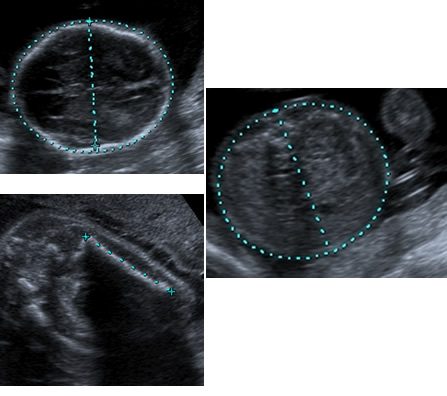Measurements are important and can be used to date the pregnancy and assess growth. You have already seen how measurement can be applied in the first trimester to make an accurate assessment of gestational age. In the second and third trimesters, the bi-parietal diameter (BPD) and femur length (FL) are commonly used to assess gestational age. Although there is variation between the size of normal babies, the measurement of the head and femur show good correlation with gestational age at least up to 24 weeks.
The largest component of the fetal abdomen is the liver and this is where the fetus will store most of its nourishment or glycogen. Measuring the abdomen is therefore a good way of assessing how well the baby is growing – for example, is it receiving enough nourishment from the placenta?
You may also see measurement of the abdominal circumference in textbooks. We will use measurement of the abdominal diameter and a simple formula to calculate the abdominal circumference because this is more easily reproducible.
It is important to obtain all these measurements in a standardised way.
Note: A glossary of terms in later pregnancy is available to download by clicking on the Resources button in the bottom right hand corner of each page.

| Fig 1 Normal fetal head (top left), femur length (bottom left) and abdomen (right) measurements |